The Importance of Speed in Today’s Digital World

In the current era where every second is vitally important, #Fast_Website_Design is no longer a luxury feature, but an absolute necessity.
Internet users have little patience and expect websites to load immediately.
If your website is slow, your visitors will leave it before they even see your content.
This not only leads to a high Bounce Rate, but also directly affects #User_Experience (UX) and ultimately #SEO and your website’s ranking in search engines.
Studies have shown that even a one-second delay in page load time can lead to a significant decrease in customer satisfaction and conversion rates.
Imagine a potential customer looking for a product or service, abandoning your site due to slow loading and going to your competitor.
This is a clear and measurable loss.
Therefore, investing in web design with speed as a priority is a strategic step for any online business.
This not only helps attract and retain audiences but also increases sales and brand credibility.
Implementing modern standards for fast website design, from image compression to using CDN and optimizing server-side code, are all vital components of this process.
This section, as explanatory content, aims to clarify the fundamental importance of speed on the web and why it should be prioritized.
Disappointed with your e-commerce site’s low conversion rate? Rasaweb transforms your e-commerce site into a powerful tool for attracting and converting customers!
✅ Significant increase in visitor-to-buyer conversion rate
✅ Unparalleled user experience to increase customer satisfaction and loyalty⚡ Get free consultation from Rasaweb!
Technical Factors Affecting Website Slowness

To have a fast website design, one must first identify the main causes of website slowness.
Several factors can affect the loading speed of a web page, and identifying and resolving them is key to performance optimization.
One of the most important factors is image size and optimization.
High-quality and large-sized images, without proper compression, can create a heavy load on the server and user bandwidth.
Using appropriate formats (like WebP) and intelligent compression for the web is essential.
Another factor is bulky and unoptimized JavaScript and CSS codes.
If these codes are not properly written and compressed, they will significantly increase browser loading time.
Minification and Concatenation of CSS and JS files can help reduce the number of HTTP requests and data size.
Server configuration and hosting quality also play a vital role.
A weak server or shared hosting with limited resources can be the main bottleneck, even if your website is optimized.
Choosing a reputable hosting provider with sufficient resources and support for new technologies like HTTP/2 and Brotli is vital for fast website design.
Excessive use of plugins in content management systems like WordPress can also reduce site speed, as each plugin adds extra code and new requests to the site.
Lack of caching is also an important factor; without caching, every time a user visits your site, the server must generate all information from scratch, which is a time-consuming process.
This section of the article, as specialized content, helps you understand the technical layers behind web speed.
Tools and Metrics for Measuring Website Speed

To ensure a fast website design, continuous measurement and monitoring of speed are essential.
Fortunately, powerful tools are available for this purpose that help you identify your website’s weaknesses and plan for their improvement.
Google PageSpeed Insights is one of the most widely used tools, providing site performance scores for desktop and mobile versions and offering specific recommendations for improving loading speed.
This tool provides analyses based on metrics such as First Contentful Paint (FCP), Largest Contentful Paint (LCP), Cumulative Layout Shift (CLS), and Total Blocking Time (TBT), all of which are Google’s Core Web Vitals.
Another tool is GTmetrix, which, in addition to providing performance scores, displays more details such as the Waterfall Chart, showing the loading time of each element on the page separately.
WebPageTest is also a very advanced tool that allows testing from various geographical locations and with different browsers, which is very useful for more precise analysis of site behavior under different conditions.
These tools, as educational and guiding content, play a key role in the fast website design process.
By regularly using these tools, you can monitor the implemented improvements and ensure that your site is always in its best performance state.
Correct understanding and interpretation of these tools’ reports are an important step in the path to speed optimization.
Comparison of Website Speed Analysis Tools
| Feature | Google PageSpeed Insights | GTmetrix | WebPageTest |
|---|---|---|---|
| Main Metrics | Core Web Vitals | Performance, Structure, LCP, TBT | TTFB, Start Render, LCP, FCP |
| Waterfall Chart Display | No | Yes | Yes (with great detail) |
| Diverse Test Locations | Limited | Limited (with free account) | Very diverse |
| Improvement Recommendations | Yes, practical and Google-related | Yes, comprehensive and detailed | Yes, technical and precise |
| User Level | Intermediate to Advanced | Intermediate to Advanced | Advanced |
Server-Side Optimization for High Performance
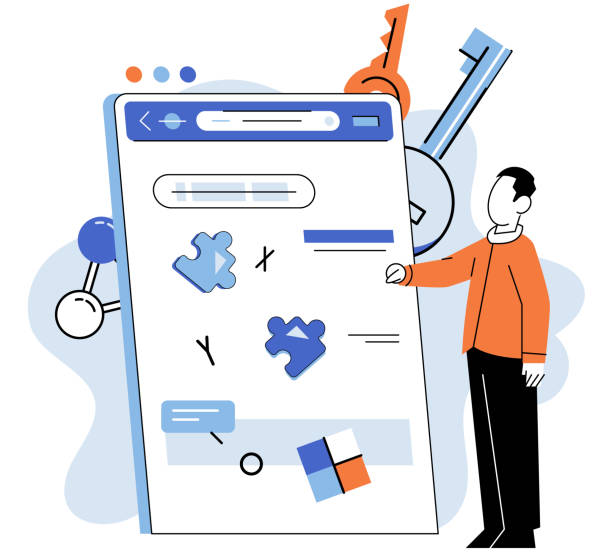
A fast website design is not limited to client-side code alone; powerful server-side optimization is equally vital.
Your server is the main hub for data and processing, and its performance directly affects page loading speed.
The first step in this path is choosing the right hosting.
Cheap shared hosting might be suitable for starting, but with increased traffic, it quickly becomes a bottleneck.
Options like VPS (Virtual Private Server), dedicated server, or Cloud Hosting are recommended for high-traffic websites and those looking for fast and stable website design.
Correct web server configuration (such as Apache or Nginx) is also of great importance.
Activating Gzip or Brotli compression for text files and CSS/JS, using server-side caching, and proper configuration for HTTP/2 can significantly reduce server response time.
Database optimization is also a key step.
Large and unoptimized databases can spend a lot of time retrieving information.
Using correct Indexing, periodically cleaning unnecessary data, and optimizing SQL Queries can improve database performance.
For WordPress websites, using caching plugins like WP Super Cache or WP Rocket, which manage both page caching and object caching, is recommended.
These plugins eliminate the need for reprocessing on every request by storing static versions of pages.
This specialized approach to server-side optimization forms the backbone of a fast and efficient website design.
Are you losing business opportunities due to an outdated website? With Rasaweb, permanently solve the problem of not attracting potential customers through your website!
✅ Attracting more high-quality leads
✅ Increasing brand credibility in the eyes of customers
⚡ Get free corporate website design consultation
Client-Side (Frontend) Optimization Techniques
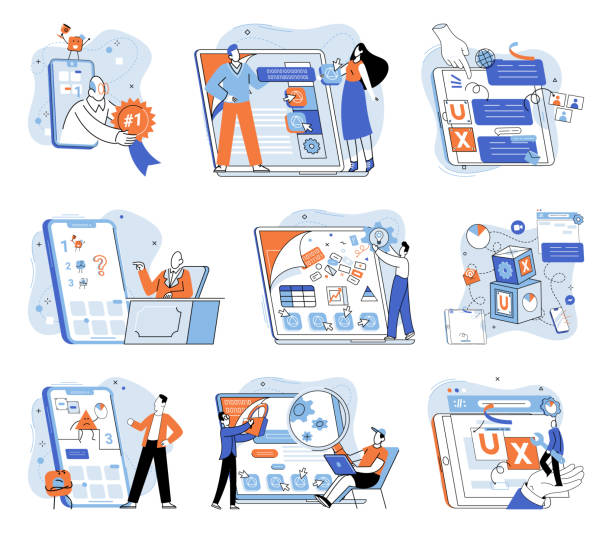
After server-side optimization, it’s time for client-side (Frontend) techniques that directly affect the visitor’s experience of a fast website design.
These techniques include actions that make the user’s browser display content faster.
The first and perhaps most important step is image optimization.
Large images, without optimization, are the biggest cause of slowness on many websites.
Using lossless compression tools, converting images to more modern formats like WebP or AVIF, and employing “lazy loading,” which loads images only when the user scrolls to them, can make a significant difference.
The second area is optimizing CSS and JavaScript files.
Minification (removing whitespace, comments, and unnecessary characters) and Concatenation (combining multiple files into a single file) can reduce the size of these files and decrease the number of HTTP requests.
Furthermore, placing CSS in the `head` section of the page and JavaScript at the end of the `body` (or using `async` and `defer` attributes) to ensure priority loading of visual content is of great importance.
Careful use of web fonts is also important; too many and large font files can reduce speed.
Font optimization and using font subsetting can be helpful.
These measures, as educational and specialized content, are an essential step towards achieving a fast website design and providing an unparalleled experience for users.
By applying these optimizations, you are directly improving your website’s visual performance and responsiveness.
Content Delivery Network (CDN) and its Role in Speed
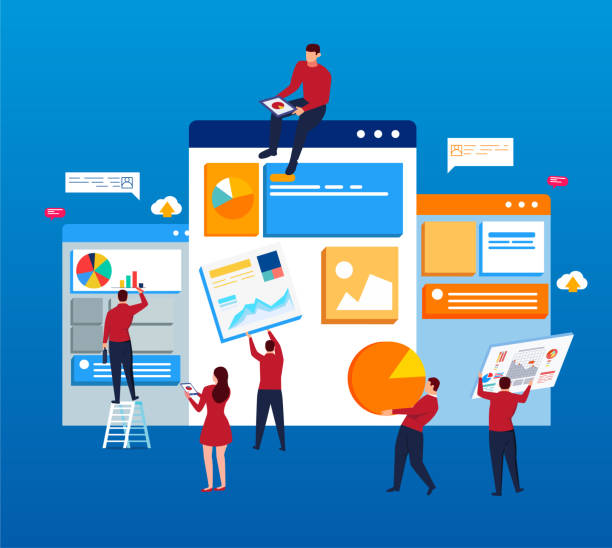
One of the most powerful solutions for achieving a fast website design is using a Content Delivery Network (CDN).
A CDN is a collection of servers distributed across various geographical locations worldwide.
The main goal of a CDN is to reduce the physical distance between the user and the content server.
Instead of all requests being sent to your main server in a specific location, a CDN stores cached copies of your site’s static files (such as images, CSS, JavaScript, videos, and fonts) on servers closer to users (Points of Presence or PoPs).
When a user requests a page, the CDN delivers the content from the closest server to them.
This process leads to a significant reduction in latency and an increase in loading speed.
For a global business, a CDN becomes doubly important; it ensures that users anywhere in the world have a fast loading experience on your site.
In addition to increasing speed, a CDN also offers other benefits, including reducing the load on your main server (as many requests are answered by CDN servers), increasing security against DDoS attacks, and improving site accessibility.
Popular providers like Cloudflare, Akamai, and Amazon CloudFront offer services in this area.
Using a CDN is certainly a vital part of a fast website design strategy, especially for large sites or sites with global audiences.
This technology, as explanatory and guiding content, helps you optimize your website’s performance globally.
The Impact of Website Speed on SEO and User Experience
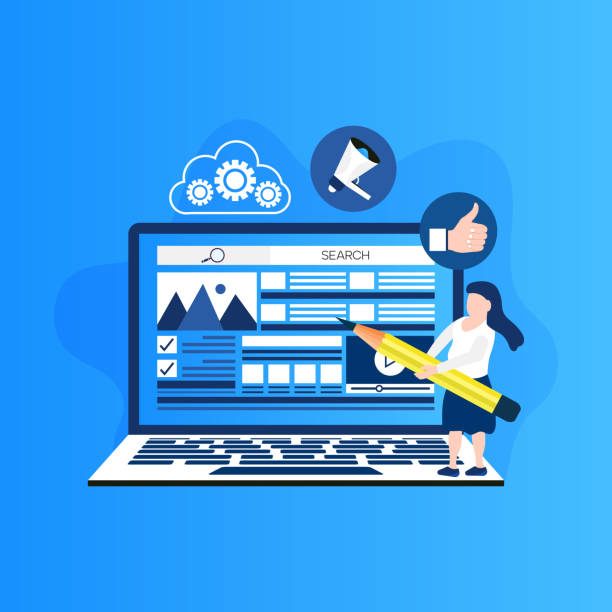
As mentioned earlier, fast website design is not just a competitive advantage, but directly affects SEO and user experience (UX).
Search engines like Google consider page loading speed as one of their ranking factors.
Slower sites, compared to faster ones, have less chance of achieving high rankings in search results.
This has gained more importance, especially with Google’s introduction of Core Web Vitals, which include metrics like LCP, FID, and CLS.
Sites that achieve good scores in these metrics will receive a better ranking reward.
On the other hand, the impact on user experience is also significant.
Today’s users expect speed.
A slow site can lead to an increased bounce rate, meaning visitors quickly leave your site.
This not only results in losing potential customers but also signals to Google that your site offers a poor user experience, which may decrease its ranking.
In contrast, a fast website design increases user satisfaction, reduces bounce rate, and increases time spent on the site.
Users are more inclined to browse more pages, interact with content, and ultimately perform desired actions (such as purchasing or signing up).
This section, as analytical and thought-provoking content, shows you why ignoring speed can mean ignoring success in the online world.
Is your business ready to take this risk?
Impact of Web Speed on SEO and UX
| Metric | Slow Site | Fast Site |
|---|---|---|
| Bounce Rate | Significant Increase | Significant Decrease |
| Time on Site (Dwell Time) | Decreases | Increases |
| Search Engine Ranking | May Decrease | May Improve |
| Conversion Rate | Decreases | Increases |
| User Satisfaction | Low | High |
The Importance of Mobile Speed and AMP Technology
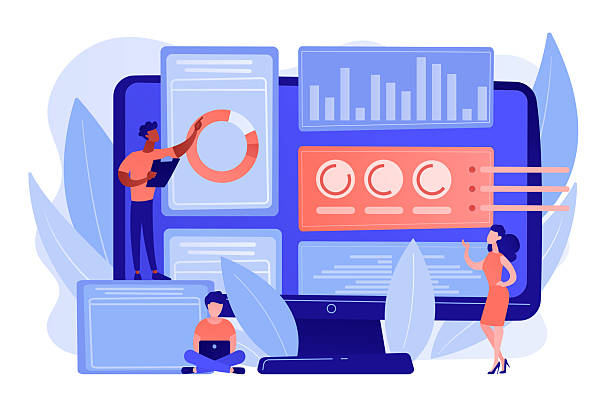
In today’s world, where a significant portion of internet traffic occurs via mobile devices, the importance of fast website design for the mobile version is doubled.
Mobile users are on the go and often connected to slower networks; therefore, the need for instant page loading on mobile is even greater than on desktop.
Google, with its Mobile-First Indexing approach, has emphasized the mobile version of websites; meaning your site’s mobile content and speed will determine its ranking in search results.
One of the main solutions for achieving exceptional speed on mobile is using AMP (Accelerated Mobile Pages).
AMP is an open-source framework supported by Google and other companies, enabling developers to build web pages with simpler, optimized code for faster loading on mobile.
AMP pages are often cached by Google and load almost instantly upon user request.
This is particularly useful for blogs, news sites, and content-driven sites where loading speed is crucial.
In addition to AMP, Responsive Design and ensuring that all site elements, including images and videos, are optimized for various devices, are also of high importance.
A fast website design on mobile not only improves user experience but also increases organic traffic and boosts conversion rates.
This section, as educational and analytical content, clarifies the necessity of focusing on mobile speed.
Did you know that poor online store design can drive away up to 70% of your potential customers? Rasaweb revolutionizes your sales with professional and user-friendly e-commerce website designs.
✅ Significant increase in sales and revenue
✅ Full optimization for search engines and mobile
⚡ [Get free consultation from Rasaweb]
Common Mistakes in Speed Optimization and Their Solutions

Even with the best intentions for fast website design, common mistakes can render optimization efforts ineffective.
Identifying these mistakes and knowing their solutions is essential for achieving maximum speed.
One common mistake is ignoring image size and not compressing them.
Many web designers upload images directly from cameras or high-quality sources without compressing them for the web.
The solution is to always optimize images before uploading and use modern formats.
Another mistake is excessive use of plugins or heavy scripts, especially in content management systems like WordPress.
Each plugin or script can add extra code and new requests to the site, leading to slow loading.
Periodically reviewing and removing unnecessary plugins or replacing them with lighter solutions is recommended.
Lack of caching at different levels (browser, server, CDN) is also a big mistake.
Caching allows the browser and server to store copies of your content so they load faster on subsequent visits.
Implementing a comprehensive caching strategy is vital for a fast website design.
Ignoring mobile optimization is also a major error that, given high mobile traffic, can lead to losing a large portion of the audience.
Ensuring responsive design and high speed on mobile should be a priority.
This section of the article, as news and guiding content, helps you avoid falling into these common mistakes and paves your way toward a website with excellent performance.
The Future of Web Speed and Emerging Technologies

The world of web is constantly evolving, and with every technological advancement, new standards for fast website design are defined.
A look into the future shows that speed will increasingly become a competitive and vital factor.
Numerous emerging technologies are forming that help further improve web speed.
One of these is HTTP/3, which is considered the next generation of the HTTP protocol and is built upon QUIC (Quick UDP Internet Connections).
This protocol promises greater speed and stability, especially in unstable networks, by reducing connection latency and improving packet loss management.
WebAssembly (Wasm) is another technology that allows developers to execute high-performance code directly in the browser, which can significantly increase the speed of complex web applications.
Furthermore, advancements in Artificial Intelligence and Machine Learning will play an increasing role in optimizing images and videos, and even in predicting user behavior for proactive content loading.
On the other hand, the development of newer image formats like AVIF and more advanced compression techniques will continue to help reduce data size.
The concept of Progressive Web Apps (PWAs) also significantly contributes to initial loading speed and interactivity by providing an experience similar to native applications and offline functionality.
This growing trend towards a faster web indicates that focusing on fast website design is not a fleeting trend but a long-term, smart investment that ensures the survival and online success of any business.
This section, as entertaining and analytical content, outlines a vision of the exciting future of the web.
Frequently Asked Questions
| Question | Answer |
|---|---|
| What is fast website design? | The process of building a website that loads quickly and provides a smooth user experience. |
| Why is website speed important? | Improved user experience, reduced bounce rate, increased conversion rate, and better search engine ranking (SEO). |
| What factors affect website speed? | Image size, number of HTTP requests, code optimization (HTML, CSS, JS), hosting speed, and browser cache. |
| How can website speed be improved? | Image optimization, file compression, using caching, choosing suitable hosting, and reducing unnecessary plugins. |
| How do images affect website speed? | Large images or those in unsuitable formats can significantly increase page loading time. |
| What is the role of JavaScript and CSS in website speed? | Unoptimized, bulky, or render-blocking code can reduce page rendering speed. |
| How much does hosting affect website speed? | The speed and quality of the hosting server directly impact website response time and initial loading speed. |
| What tools are available for checking website speed? | Google PageSpeed Insights, GTmetrix, Pingdom Tools are common tools. |
| What are the benefits of a fast website? | Higher user satisfaction, reduced bounce rate, increased time on site, and improved Google ranking (SEO). |
| What are common mistakes that slow down a website? | Using unoptimized images, bulky and disorganized coding, excessive use of plugins, and lack of caching. |
And other services of Rasa Web Advertising Agency in the field of advertising
Ad Placement Strategies for Smart Home Appliances
The Role of Customer Support in Increasing Trust in Website Ads
How to Use Classifieds Websites with Price Comparison Features
Creating Interactive Ads with Direct Call Functionality
Benefits of Listing Ads on E-commerce Classifieds Websites
And over hundreds of other services in the field of internet advertising, advertising consultation, and organizational solutions
Internet Advertising | Advertising Strategy | Advertorial
🚀 Transform your business’s digital presence with Rasa Web’s internet advertising strategies and advertorials.
📍 Tehran, Mirdamad Street, Next to Central Bank, Southern Kazeroun Alley, Ramin Alley, No. 6

